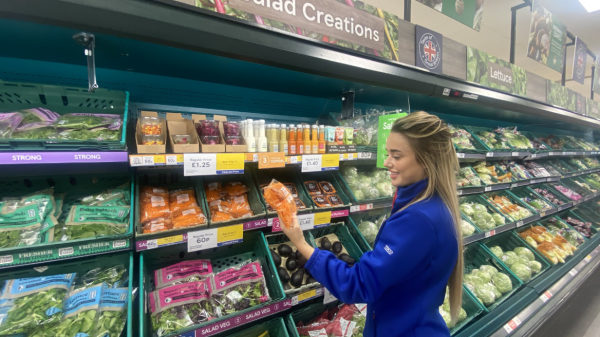Every shift, supermarket associates are responsible for hundreds of products and have to follow a large number of protocols and processes in order to store, shelve, and sell them correctly. That’s not something that happens without the right systems in place.
Enter microlearning: it involves learning in digestible, bite-sized chunks using a collection of different media (instead of ineffective hour-long classroom sessions). Supermarkets and retail organisations all over the world have applied it to great effect, and these are the four main advantages that you can expect if implemented properly at your location.
1. Microlearning delivers tangible results
There are two ways to judge the effectiveness of a given training methodology: engagement and retention. And microlearning excels at both. Because microlearning sessions are short and focused, they do a much better job of engaging associates than longer, more traditional classes. They also provide targeted, filler-free information that gets to the point immediately, making the most of the user’s limited time.
Microlearning-based tools also make use of a variety of media such as videos, text, infographics and games that are far more engaging than a dry PowerPoint or procedural manual. Game mechanics like leaderboards and rewards are also proven to motivate associates to complete their training and come back for more.
In addition to being engaging, short microlearning sessions also help with information retention. The lessons imparted during 5-minute modules are reinforced over time, which reduces mental fatigue and increases long-term memory storage.
2. Microlearning fits the flow of work
Supermarket associates always have things to do and not enough time to do it. This means that disruptions to their workflow, even for training, can significantly impact productivity. That’s not a problem with microlearning. Training modules run an average of five minutes, which are much easier to slot in during a shift. Some stores make daily learning part of their pre-opening schedule, while others schedule it for the afternoon breaks. That’s the point—associates can learn anytime, anywhere.
3. Microlearning offers more precise reporting
As a supermarket operator, you know how valuable data is for ensuring smooth and profitable operations, so why should training your frontline staff be any different? Learning management systems built around microlearning can gather data about how many of your frontline staff are completing the training, what they’re picking up and where they’re challenged. With this information, you’ll be able to adjust your training programs on the fly to address the gaps, not to mention highlight employees who could benefit from extra one-to-one coaching.
4. Microlearning is quicker to deploy (and adjust!)
Speaking of agility, it’s important for a training program to stay flexible in the event there are policy changes or new regulations. Procedural manuals and employee handbooks are difficult to update and deploy across multiple supermarkets—even digital copies. Contrast this with microlearning, where the entire training program is a collection of self-contained modules. If there are any changes, you can update and deploy a single module with the new information. No need to touch the rest. It’s fast, simple and easy. And it allows you to respond quickly to industry or regulatory changes. Considering updating training materials is one of the biggest operational issues that managers are trying to solve for, this is a critical benefit.
The microlearning difference
The benefits of microlearning are clear. When matched with an appropriate learning management system, microlearning can speed up new associate onboarding, upskill the current frontline workforce and increase staff productivity and morale. The net effect is a highly motivated and skilled frontline workforce, better-run stores and a much-improved shopping experience.











